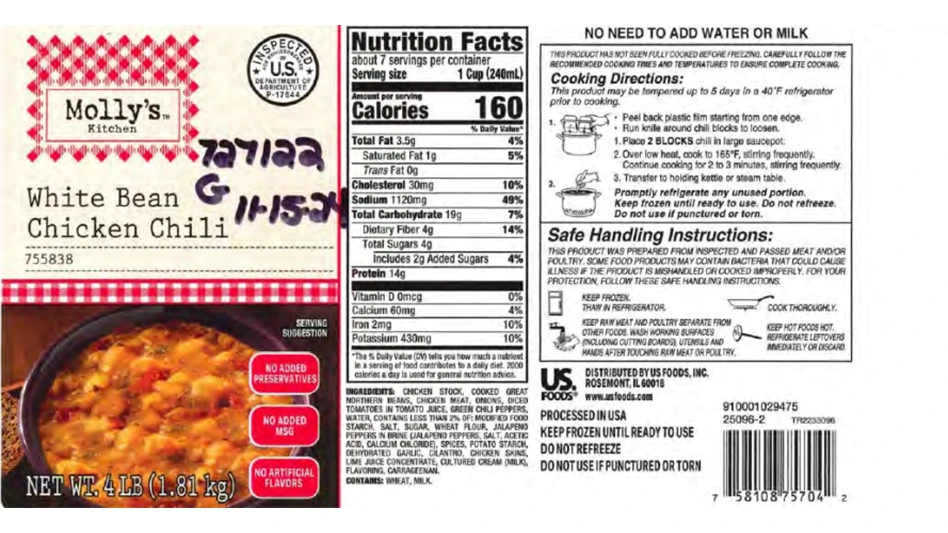Recent news from the USDA is showing promise for developments in pathogen control and functional foods.
• Campylobacter. A study has shown that a type of high-tech imaging can be used to distinguish Campylobacter from other microorganisms as quickly as 24 hours after a sample is placed on solid media in a Petri dish. The researchers used a technology called hyperspectral imaging, which combines digital imaging with spectroscopy, to provide hundreds of individual wavelength measurements for each image pixel. Growing Campylobacter directly on solid media has been an effective method to isolate this organism, but distinguishing it from non-Campylobacter microorganisms is difficult because different bacteria can look very similar. However, the study found that microorganisms grown on solid media carry unique spectral fingerprints in the specific portion of the electromagnetic spectrum. A hyperspectral imager identifies these fingerprints by measuring light waves that bounce off or through these objects. The researchers are working toward developing a presumptive screening technique to detect Salmonella and Campylobacter in food samples. In addition, hyperspectral imaging may be applicable to other pathogen detection studies.
• E. coli. A USDA team has discovered key gene and chemical interactions that allow E. coli O157:H7 bacteria to colonize the gut of cattle. The animals can host and shed the pathogen. Researchers reported how the E. coli sense a key chemical that plays a critical role in allowing the bacteria to colonize inside the cattle’s gastrointestinal (GI) tract and showed that “quorum sensing” chemicals called acyl-homoserine lactones (AHLs), produced by other bacteria, are present in the bovine rumen but absent in other areas of its GI tract. AHLs are important because E. coli harbor a regulator, SdiA, which senses these AHLs, then prompts the E. coli to attach and colonize. Limiting production of SdiA, or blocking bacterial reception of the AHLs, may lead to new strategies for keeping E. coli from attaching inside the animal.
• Cinnamon. Although the use of cinnamon dates back over 4,000 years, a USDA researcher recently discovered a new use for the spice, that is, its benefits for regulating glucose. In the body, sugars and starches are broken down into glucose, which then circulates in the blood. According to the research, cinnamon appears to mimic insulin and helps to drive glucose into the cells. This improved insulin function could be helpful for lowering blood sugar levels.

Explore the October 2010 Issue
Check out more from this issue and find your next story to read.
Latest from Quality Assurance & Food Safety
- FDA Shares Testing Results for PFAS in Bottled Water
- Provision Analytics Adds Food Safety Expert Jennifer Williams to Strategic Advisory Group
- Boston Sword & Tuna Protects Seafood Safety with Mettler-Toledo Metal Detectors
- IFT Releases New Resources to Aid Food and Beverage Industry in Sugar Reduction
- Yum! Brands CEO David Gibbs to Retire in 2026
- Penn State Extension Offers Short Course on Food Microbiology and Safety for Food Plant Workers
- Johnsonville Recalls Cheddar Bratwurst Due to Possible Plastic Contamination
- Cabot Creamery Butter Recalled Due to Possible Fecal Contamination





